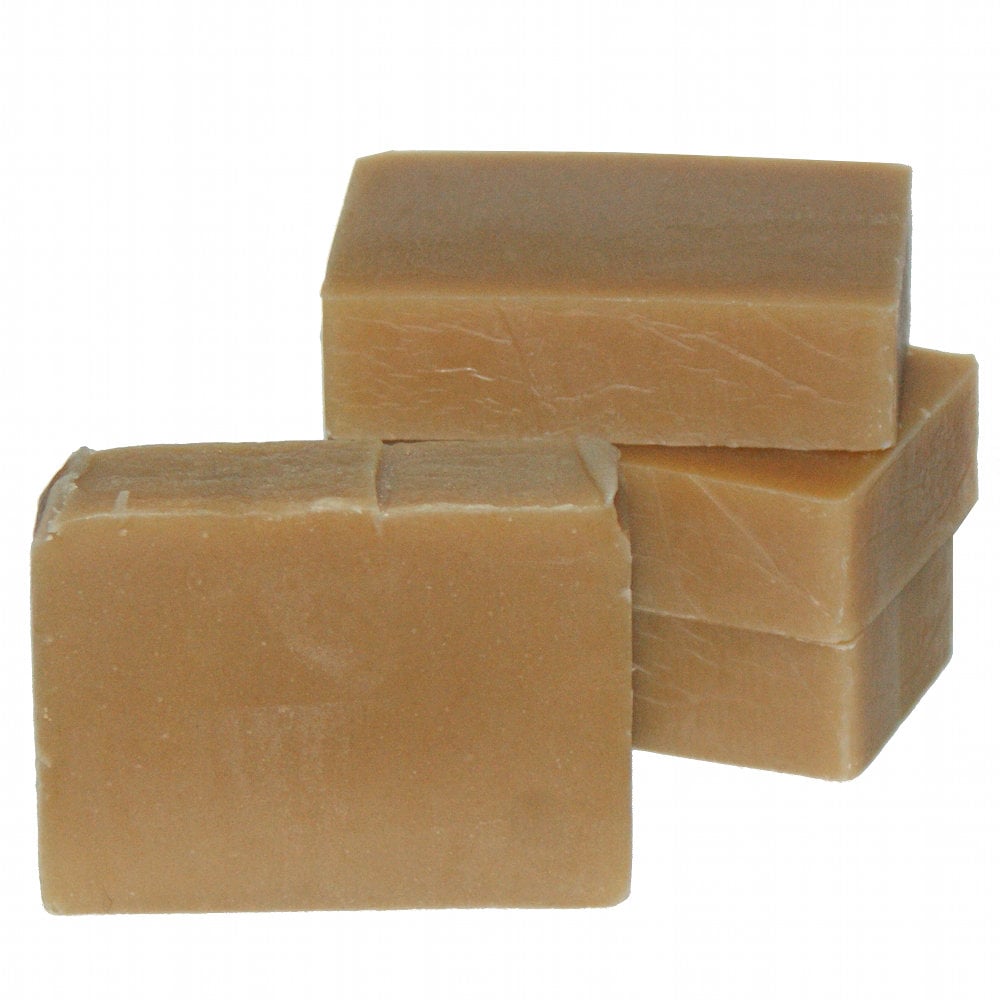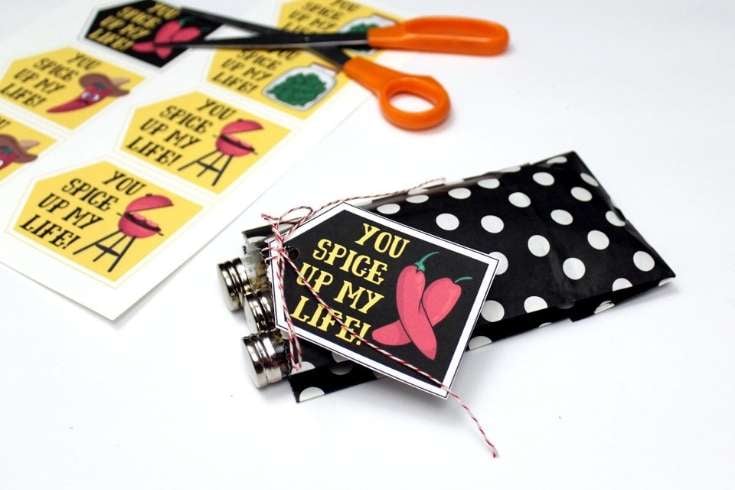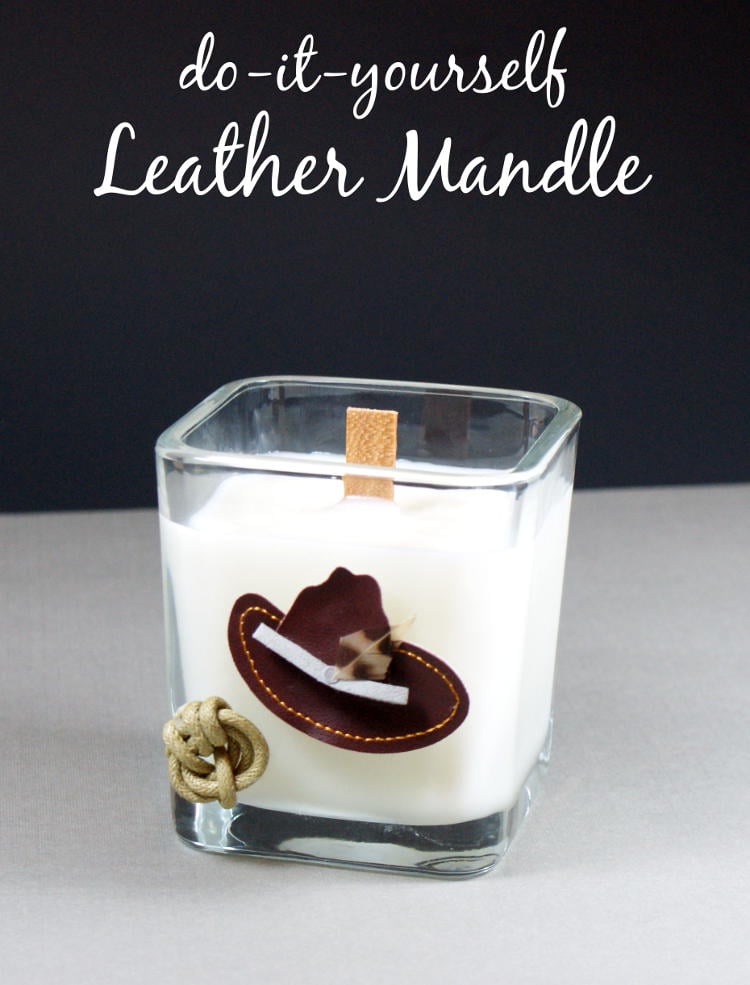
Rebecca’s Best Ever Handmade Unscented Goat Milk Soap Recipe

For many years when I used to sell handmade soap on the market, this handmade unscented goat milk soap was my top selling soap. Not only is this handmade goat milk soap perfect for those who are allergic to fragrances, but it also makes a great facial soap. In addition, it’s skin conditioning ingredients are perfect for those suffering from dry or maturing skin. This handmade unscented goat milk soap recipe uses a simplified process for making goat milk soaps that entails using powdered goat milk, so even beginning soapmakers are ensured success.
Rebecca’s Best Ever Handmade Unscented Goat Milk Soap Recipe
© Rebecca D. Dillon
Ingredients:
5 oz. cocoa butter
5 oz. shea butter
2 lb. 7 oz. palm kernel flakes
1 lb. 2 oz. sustainable palm oil
1 lb. 6 oz. olive oil
1 lb. 6 oz. rice bran oil
36 fluid oz. distilled water
15 oz. lye (sodium hydroxide)
1/2 Cup goat milk powder
1/2 Cup colloidal oatmeal
Instructions:
This recipe uses three of my wooden soap molds and will yield 30-36 bars depending on how you cut them.
To make this soap you will need to follow your basic cold process soapmaking instructions, taking all necessary safety precautions and weighing your ingredients – soapmaking oils, butters and lye.
To incorporate the goats milk powder, you will need to follow my article on How to Make Goats Milk Soap the Easy Way. Once your melted soapmaking oils and lye-water have cooled, you will measure out and add the goats milk powder and colloidal oatmeal to your cooled oils BEFORE you add the lye-water. Use your stick (immersion) blender to mix thoroughly. Once these ingredients have dissolved, then you can mix in the lye-water.
At trace, pour the soap into your lined molds, then cover and insulate for 24 hours. If you wish to use a fragrance, you can add up to 6 oz. of fragrance oil or up to 3 oz. of essential oils at trace. Once you unmold your soaps, cut into bars, and allow soaps to cure for a minimum of three weeks before using.
For more cold process soapmaking recipes as well as other bath and beauty diy’s be sure to follow me on Pinterest.




16 Comments
Kristen
October 19, 2013 at 3:55 pm
Hi i cant get goats milk powder could i use regular milk powder instead? also i like the scratchiness of having actual oatmeal can i use 1/2cup of ground oats instead of the colliodal oatmeal?
P.S. I really love all your recipes
Rebecca D. Dillon
October 19, 2013 at 4:18 pm
Thank you! Yes, you can use powdered cow milk or even coconut milk powder! And ground oats is a perfectly suitable substitute if you like an exfoliating soap.
Jen Maure
December 22, 2013 at 3:05 pm
Hi! I would love to try this recipe using a milk carton as my mold (I’m just starting and haven’t bought a real mold yet!). Can you give me advice on how to shrink the recipe to fit a smaller mold? Thank you!
Rebecca D. Dillon
December 22, 2013 at 3:15 pm
You can find information on re-sizing a batch here.
Sara
April 22, 2014 at 8:07 pm
I am very excited to make the Goats Milk Recipe, but I have some left fresh buttermilk in the fridge I want to substitute to use up. How much buttermilk would I use? 1/2 cup?
Rebecca D. Dillon
April 22, 2014 at 8:28 pm
You would instead sub the water for buttermilk. Freeze the buttermilk first until it’s slushy cold, then pour the lye into the buttermilk.
Cindy
May 17, 2014 at 11:38 pm
Your recipe sounds wonderful and I’m interested in trying it. However, I would really love to substitute the palm oils and palm kernel flakes. Any idea what I could substitute that would still give me a recipe close to yours? Thank you 🙂
Rebecca D. Dillon
May 18, 2014 at 9:49 am
There’s not really anything you can sub without having to create a completely new recipe. The palm kernel flakes are there for lather, but was chosen as it’s not as drying as coconut oil can be. The palm oil is for a hard bar and you can use more expensive butters or beeswax or something like babassu oil but it will change the final bar entirely. You can buy sustainable palm oil or you can play around with this recipe and use it as a place to start for making your own.
Toya
May 24, 2014 at 5:36 pm
Hey Rebecca! I am new to making soaps, and this is the first one I have ever made. When I put soap into the molds, it had a dark cream hue. Within 15 minutes it started turning dark brown. Is this normal? I followed the recipe exactly except I started mixing in the lye at 120 degrees as oppose to your 100 but still below 125. I was a little excited.
Rebecca D. Dillon
May 24, 2014 at 6:00 pm
The final bar will be a dark tan. It may have been the higher temps. Milk soaps should really be mixed at lower temps as they get hotter and can seize or crack along the top middle when mixed too hot. Let me know how it turns out after it cures.
Toya
May 26, 2014 at 4:36 pm
Ok, so I believe it has turned out like it’s supposed to look! I was nervous there for a bit. Thanks so much! You are so great at responding and helping, and I really do appreciate it! My second question- My husband and I built the loaf molds based on your plan. If I wanted to just make one mold, instead of 3 in the future, can I simply just cut the whole recipe down to a third?
Rebecca D. Dillon
May 26, 2014 at 6:45 pm
Sort of. You’ll have to adjust the water and lye as necessary by running it back through a lye calc. To get it the same, use 1lb. 5 oz. as the original amount for the rice bran and olive oils when resizing. Superfat at 5%. Use a 35% water discount and then add 1/3 of 1oz. more of the olive and rice bran as the extra ounce on these I added in after calculating.
Toya Stanitzek
May 30, 2014 at 10:56 am
I promise this is my last question on this soap. haha Would you recommend this soap or the neem oil soap for babies? I have a 1 and 2 year old. My 2 year old has eczema.
Toya Stanitzek
May 30, 2014 at 10:57 am
Also, if this is okay to use, could I add water and glycerin to make it into a liquid soap for them??
Rebecca D. Dillon
June 1, 2014 at 8:15 am
You could rebatch it to make liquid soap, yes.
Rebecca D. Dillon
May 31, 2014 at 10:28 am
Yes, definitely.
Comments are closed.